Sharing a name with Vietnam’s Red River, this river is located in a country halfway around the world.
In the valley near the city of Cusco, in the Republic of Peru (a country in South America, facing the Pacific Ocean), there is a famous river known worldwide as the Red River.
This river is not renowned for its size, width, or length, but rather for its striking red color during the rainy season. Perhaps it is for this reason that it has been given the name Red River. Locals refer to it as Palquella Pucamayu.
The river turns red each rainy season.
In 2022, this river suddenly became a “phenomenon” that went viral on social media after appearing in a TikTok video that attracted millions of views. In the comments section, TikTok users expressed their astonishment, noting that the water looked like “blood,” with some even comparing it to flowing wine.
So, what causes this strange phenomenon?
The Red River of Peru is formed by rainwater flowing from the Palcoyo Rainbow Mountain valley. The color of the water is a result of red sandstone rich in iron oxide. This mineral-rich sedimentary rock is washed away from the hillsides during rain, giving the water its vibrant red or dark pink hue (the exact shade depends on the amount of rainfall).
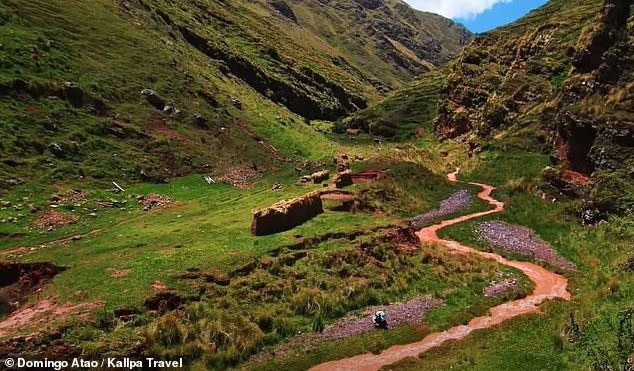
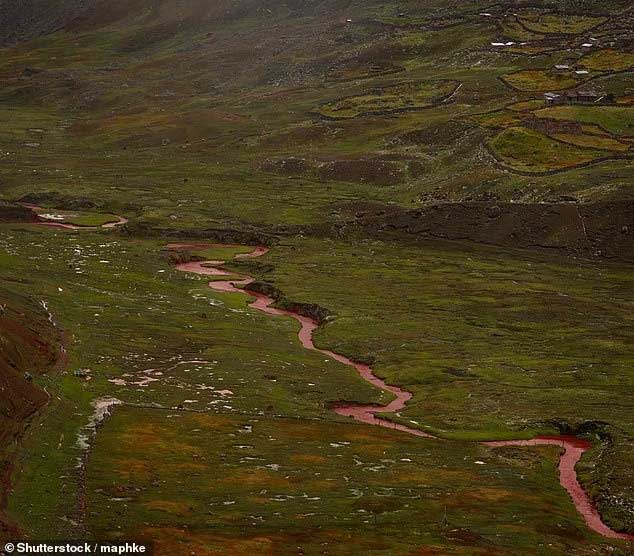
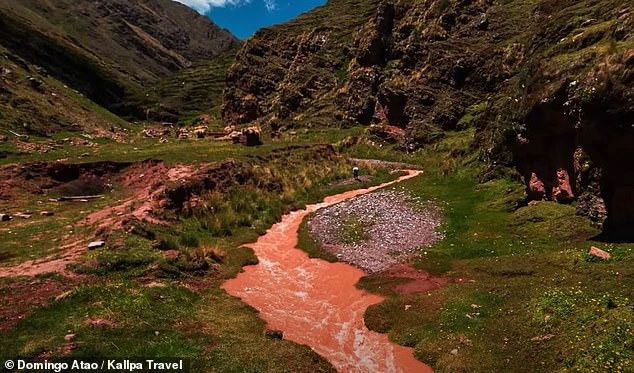
Mother Nature has “rolled out the red carpet” to create this magnificent masterpiece.
The local tour operator Kallpa Travel reveals that the rainy season in Peru, from November to April, is the best time to visit this river because this is when the water turns red. In the dry season, the river’s water returns to a murky brown like most other rivers.
The river only maintains its red color for about 5 kilometers from its source near the Palcoyo Rainbow Mountain valley. As it flows downstream, the river mixes with other streams and smaller rivers, becoming diluted and losing its vibrant color.
On its website, travel company AB Expeditions explains: “Many of these smaller branches eventually flow into the Vilcamayo River, crossing the sacred Cusco Valley and passing through the famous ancient city of Machu Picchu.
Further along, this river is called Urubamba before it traverses the infamous Pongo de Mainique gorge as it weaves through dense jungle and ultimately flows into the mighty Amazon River.”
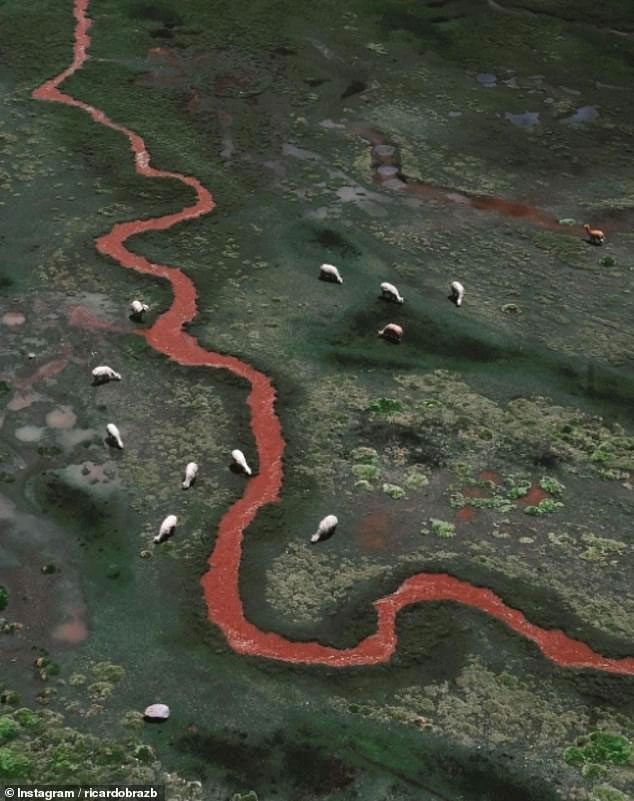
The river only has a red color for about 5 kilometers.
The Cusco Native travel website notes that locals call it Palquella Pucamayu. This name originates from Quechua, the primary language of the Inca Empire and an official language in Peru. The term “Palquella” means “small branch,” while “Pucamayu” translates to “pink river.”
Many travel companies take tourists to this river, located about 3 hours southeast of Cusco, as part of a day trip to visit the nearby Vinicunca Rainbow Mountain.
Additionally, independent travelers can take a bus and then a taxi to the riverbank.
In fact, this is not the only location in the world with pink waters. A famous example is Lake Natron in Tanzania, where the ruby-red color is due to bacteria in the water.
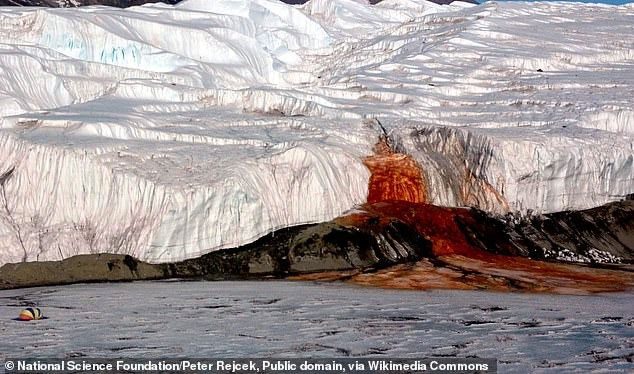
Blood Falls, a strange red waterfall discovered in the dry McMurdo Valley, Antarctica, in 1911.
Another waterfall named Blood Falls, featuring a strange red water flow, was discovered in the dry McMurdo Valley, Antarctica, in 1911.
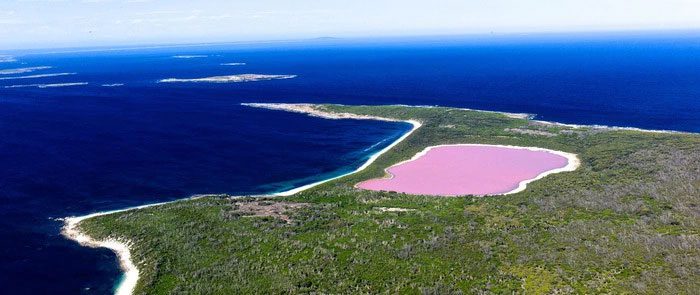
Lake Hillier is fascinating due to its distinctive pink color.
On Middle Island—the largest island in the Recherche Archipelago, located in the Goldfields-Esperance region off the southern coast of Western Australia—there is a beautiful, serene pink lake known as Lake Hillier.
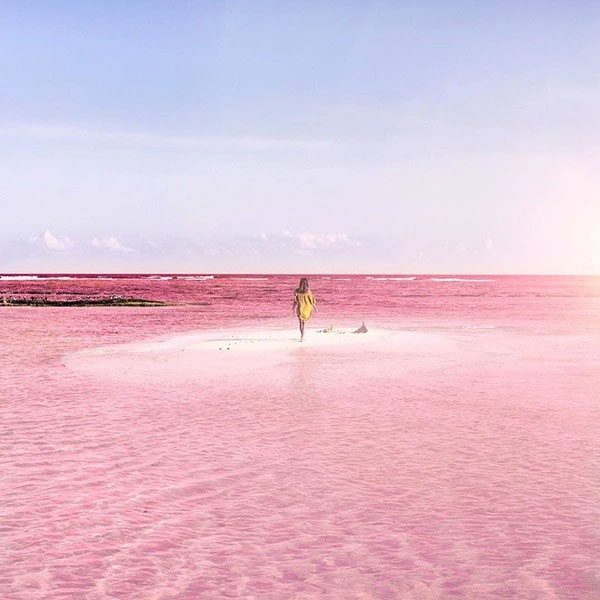
The pink color of the water creates a surreal landscape as if from another world.
In a small fishing village named Las Coloradas, located on the eastern shore of the Yucatán Peninsula (Mexico), there is a lagoon famous for its naturally bright pink waters, attracting many tourists from around the globe.


















































